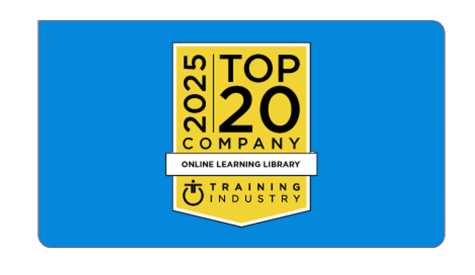LMS Implementation: A Concrete and Tactical Guide

Most sales professionals feel that their job is done after the close. Me, I like to keep up with our new LMS clients, right on through implementation and early use. In talking with many of those clients, I’ve learned that the LMS implementation process itself can be a bottleneck, leading to unnecessary delays.
Here’s what’s shocking about that: LMS implementation is really pretty easy and quick—if it’s built anything like our HSI LMS platform. (In fact, our average implementation time is two weeks, and we’ve seen them as short as three days!)
It turns out that most of the delays in LMS implementation, no matter what platform is involved, occur when a vendor has not prepared a client or prospect ahead of time. No wonder some new clients aren’t prepared, or simply don’t know how to take advantage of all the features provided.
The internet is no help here. There are plenty of “LMS implementation guides” that talk about LMS from a very broad, strategic point of view. A broad overview is not bad, but it won’t give you the concrete steps you need to get going.
Whether you are launching a brand-new LMS or migrating from an old legacy one, whether you are considering our HSI LMS or a competitor’s LMS, or both, you should know the concrete steps that make for a smooth implementation. And you should start these now while you are still shopping!
HSI’s Tactical LMS Implementation Guide
Note: This guide assumes that you already know the big picture—that you understand your learning culture, have defined your corporate competencies and learning paths, have formulated your training goals, and so on.
If you’ve got those in place, you’re ready! Here's our recipe for a successful launch...
Step 1: Prepare Your Data
Importing your data into our HSI LMS (or any other modern LMS) takes very little time. But you will need to think hard about what data you will need, and from where you need to get it. This can turn into a time-consuming step, so it is best to do it even as you are shopping for your new LMS.
A good way to determine what data you will need to collect is to think about how it will be used in the system. For example:
Think about what you want to see in your reports. If you need learning reports broken down by department, for example, you will need to have all employees flagged with the relevant department. Likewise, if you want to see where your training has had good uptake, you will need to add a location attribute before you upload your data. The same goes for other attributes, such as supervisor, job class, worker category, business unit, and hire date.
Think about learning groups and learning paths. Not everyone will need or want the same training, and not everyone is on the same career trajectory. The attributes you include in your data must segment your employee pool along those lines. For example:
- If your salesforce needs sales skills-specific training, you will need to make sure all (and only) your salespeople are assigned those courses. This can easily be done by making a “sales” group with a sales skills learning path, and then assigning people to that group if their department attribute equals “sales.”
- Likewise, managers will need training in leadership skills. So, you will need to have the worker category equal “manager” for those employees. Then, during implementation, you can assign them to, say, a leadership skills group.
- If location equals warehouse, you could assign special warehouse safety-related content in a similar way.
And so on. The idea is to have these attributes set ahead of time so that, when it comes time to set up groups and learning paths in the LMS, assigning those is fast and easy. (If attributes are not set, it creates a lot of tedious manual work right in the middle of your implementation!)
Step 2: Think About Overall Settings
Think about what happens when you install any kind of software and use it for the first time. There are bound to be a number of settings that need to be tweaked, plugins that need to be managed, and preferences that need to be set. If you know what you need, this process can be quick and easy.
With thousands of LMS’s to choose from, here are the things we think you should take into consideration:
- Are training reinforcement quizzes going to be turned on?
- If so, should employees be allowed to take a quiz or exam without watching the accompanying video first?
- Should learners be allowed to leave comments and feedback on videos?
- Will you be needing any internal or custom content to supplement what comes with the LMS?
- Should learners be allowed to message each other through the system?
- What will the welcome email look like?
- What will the dashboard look like? (E.g., do you need to show recent activity? Leaderboards? Featured topics?)
- Are employees able to forward their exam results—for example, to their supervisor?
- Are you going to send emails about required courses? How often?
- Who gets the Administrator Quick Start Guide? Who gets the full Admin Guide?
We provide a similar checklist to all our new clients when they are ready to implement. You should figure out the answers to each and write them down, so when LMS implementation time rolls around, your LMS implementation specialist can get your settings configured quickly and easily (and answer any question you might have).
Step 3: Plan Your Launch
Getting an LMS set up is one thing. Getting your people set up is quite another. Folks won’t take to your new system just because you’ve purchased it. You need a way to guarantee they will use it, or else you won’t see a return on your investment.
Consider:
Who will be first in the rollout? While some companies do a grand rollout to the entire organization at once, many do a phased LMS implementation in order to work out any kinks. For example, some might roll out to their managers first, and then to the rest of the organization. Or you might implement in one location first. Some even do a kind of “open beta” where a few superstars and early adopters are allowed to try the system (in the hopes, of course, that they will bring everyone else on board during the full rollout).
How will you get management on board? When will managers be informed of the change, and how will you help them prepare? This will be important both for getting their buy-in and for helping them manage the new system.
How will you “market” the new system to employees? Once management is on board, how will you present the LMS to a department or the company at large? Will it be announced at an all-employee meeting? Via email blast? Posters in the lunchroom? (All three?) You will need a communication plan that answers these questions and promotes the new training to your employees ahead of time to build some excitement around it. You will also want to think about an ongoing promotion schedule to maintain engagement.
What information will they need to know to get started? Don’t forget to provide useful information for getting started. This could be in the form of a quick demo, and quick reference guide or handout, or even a series of emails explaining the process.
Throughout the Process: Lean on Us
OK, I can’t speak for all LMS vendors. But here at HSI, we take great pride in providing that “personal service” throughout the implementation process and beyond.
When you choose HSI LMS as your LMS, we will assign you a dedicated learning consultant who can help walk you through the entire process. We have checklists, based on this guide, that will walk us through the entire process. That way, you don’t have to think of everything—there is a set and defined process in place.
We’ve found that this magic combination of thoroughness, preparedness, speed, and personal attention can make for a quick and painless implementation.
In fact, to see the contrast, listen to this story from one of our current clients. They had wasted an entire nine months working with another vendor and still hadn’t had their LMS launched. (Just think: That’s enough time to create and birth a whole new human being. Just sayin’.) But once this client switched to HSI, we had them up and running in less than a month!
Preparation really does help. Let us help you get started!
Additional Resources
- Our learning consultants hold your hand through the entire LMS implementation process at no additional charge. Learn more in our blog "What is a Learning Consultant?"
- If you are shopping around for LMS providers, this blog post will be exceptionally helpful "Buying an LMS: The Complete Feature Checklist to Make the Right Choice." It includes a handy checklist you can download to help with your comparisons.
- If you need training content, you should read our most popular blog post "How to Buy eLearning Content for Your LMS (And Not Regret It Later)." This post also includes a checklist!
- If you want to compare eLearning providers, you might find these pages helpful as well. We provide side-by-side comparisons between HSI and several major eLearning companies.


